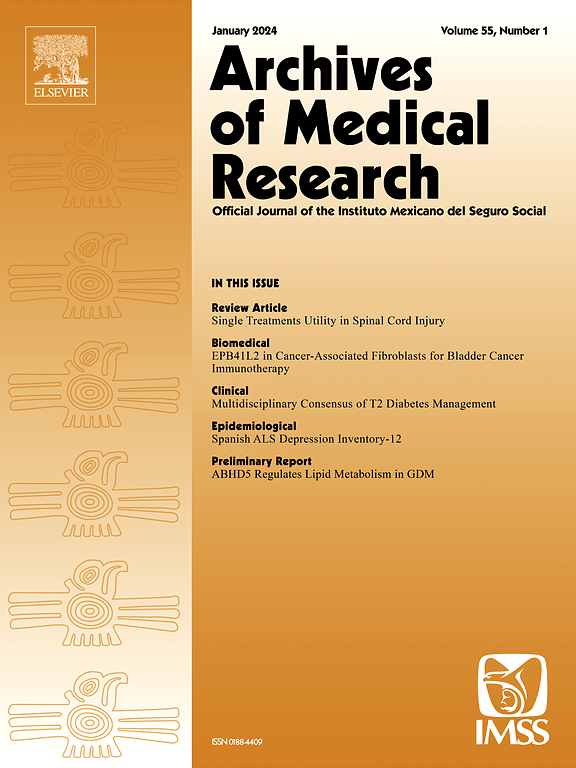QT延长患者心外膜底物和诱发心律失常的导管消融
IF 3.4
3区 医学
Q1 MEDICINE, RESEARCH & EXPERIMENTAL
引用次数: 0
摘要
背景和目的长QT综合征(LQTS)消融术目前仅限于高危或难治性病例,目的是消除室性早搏(VPC)等诱发因素。然而,底层衬底的特性和射频烧蚀的作用尚未得到广泛讨论。方法与结果8例有症状的LQTS患者(均为女性;年龄36±10.2岁)行心内膜和心外膜三维制图,探查室性心律失常的触发因素和/或底物。基因检测显示,3例患者KCNH2基因分别存在P1093A突变,SCN5A基因存在H558R突变,KCNH2基因存在K28E突变。共鉴定出13个VPC形态,包括5个右心室流出道(RVOT) VPC、1个基底外侧RV、2个根尖下RV、1个三尖瓣环外侧RV、3个基底外侧LV和1个二尖瓣外侧环心外膜部位。心外膜电压测图显示所有患者均有中度至大面积的疤痕和低电压。所有患者均记录局部异常心室活动(LAVAs)并成功消融。心外膜LAVA消除后校正QT间期(QTc)缩短(594.9±85.98 ms vs 490±67.49 ms, p = 0.001)。在平均随访288±147.4 d(范围170-492 d)期间,2例患者出现室性心动过速(VT) /心室颤动(VF)复发。结论LQTS患者可发现区域性和局限性心外膜lava。射频消融VPC触发器和心外膜LAVAs对预防未来VT/VF复发有中等效果。本文章由计算机程序翻译,如有差异,请以英文原文为准。
Catheter Ablation of Triggers and Arrhythmogenic Epicardial Substrates in Patients With QT Prolongation
Background and Aims
Long QT syndrome (LQTS) ablation is currently limited to high-risk or refractory cases, targeting the elimination of triggers such as ventricular premature contraction (VPC). However, the characteristics of the underlying substrate and the role of radiofrequency ablation have not been extensively discussed.
Methods and Results
Eight symptomatic patients with LQTS (all women; aged 36 ± 10.2 years) underwent 3-D endocardial and epicardial mapping of triggers and/or substrates of ventricular arrhythmias. Genetic testing revealed P1093A mutations in the KCNH2 gene, H558R mutations in the SCN5A gene, and K28E mutations in the KCNH2 gene in three patients, respectively. A total of 13 VPC morphologies were identified, including five right ventricular outflow tract (RVOT) VPCs, one basal lateral RV, two from inferoapical RV, one from the lateral to annulus tricuspid, three from basal lateral LV and one from epicardial site of the lateral mitral annulus. Epicardial voltage mapping revealed moderate to extensive areas of scar and low voltage in all patients. The localized abnormal ventricular activities (LAVAs) were recorded in all patients and were successfully ablated. The corrected QT interval (QTc) shortened after the epicardial LAVA elimination (594.9 ± 85.98 ms vs. 490 ± 67.49 ms, p = 0.001). During a mean follow-up period of 288 ± 147.4 d (range 170–492 d), two patients experienced ventricular tachycardia (VT) /ventricular fibrillation (VF) recurrence.
Conclusion
Regional and limited epicardial LAVAs could be identified in patients with LQTS. Radiofrequency ablation of VPC triggers and epicardial LAVAs had a modest effect on preventing future VT/VF recurrences.
求助全文
通过发布文献求助,成功后即可免费获取论文全文。
去求助
来源期刊

Archives of Medical Research
医学-医学:研究与实验
CiteScore
12.50
自引率
0.00%
发文量
84
审稿时长
28 days
期刊介绍:
Archives of Medical Research serves as a platform for publishing original peer-reviewed medical research, aiming to bridge gaps created by medical specialization. The journal covers three main categories - biomedical, clinical, and epidemiological contributions, along with review articles and preliminary communications. With an international scope, it presents the study of diseases from diverse perspectives, offering the medical community original investigations ranging from molecular biology to clinical epidemiology in a single publication.
 求助内容:
求助内容: 应助结果提醒方式:
应助结果提醒方式:


